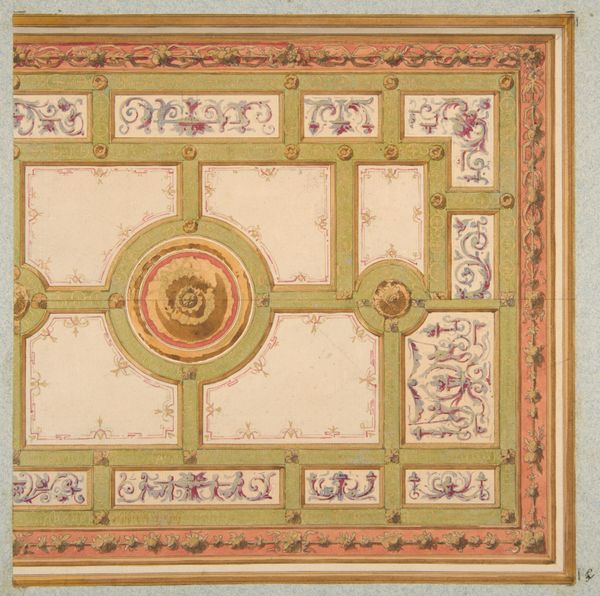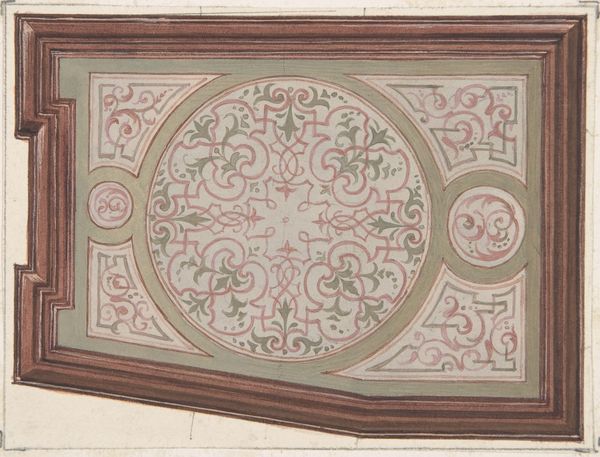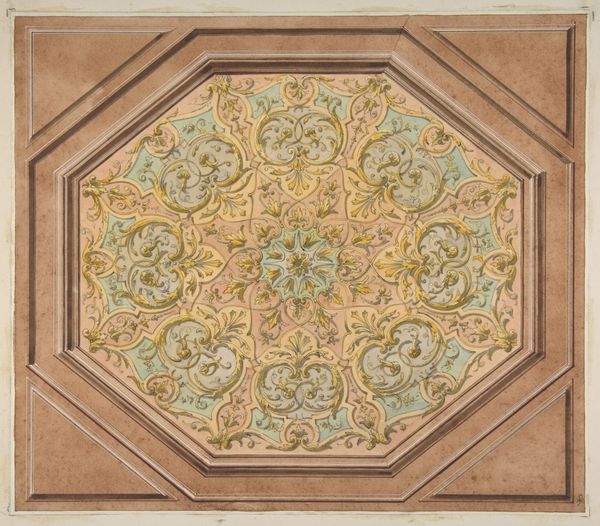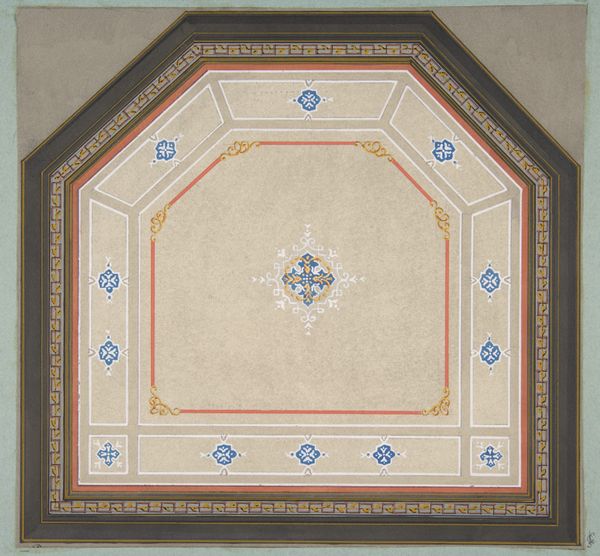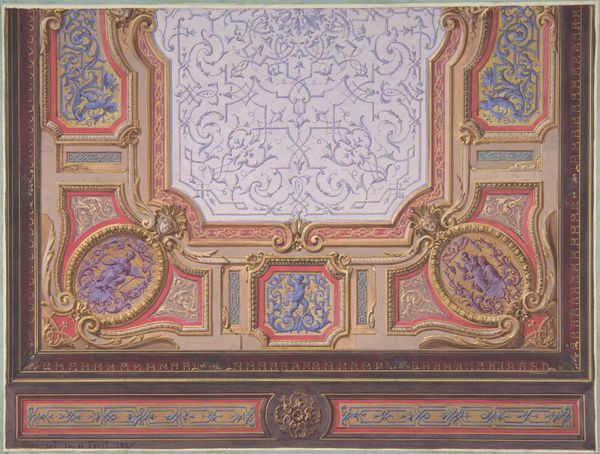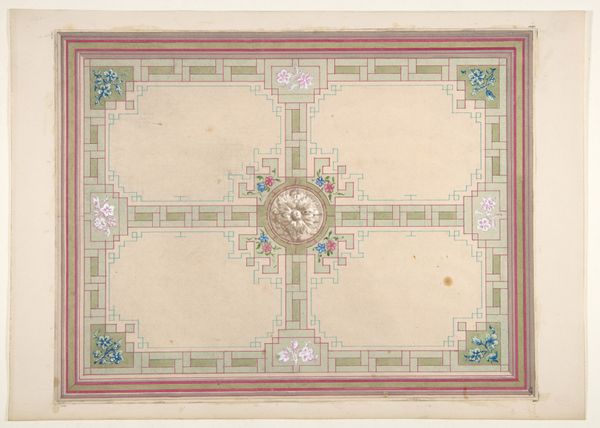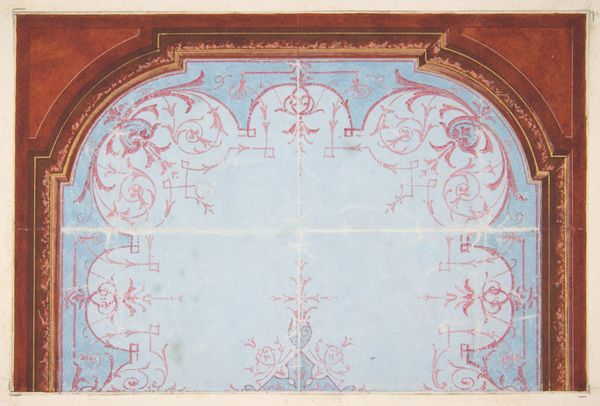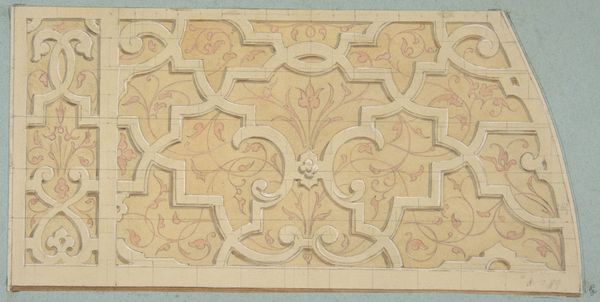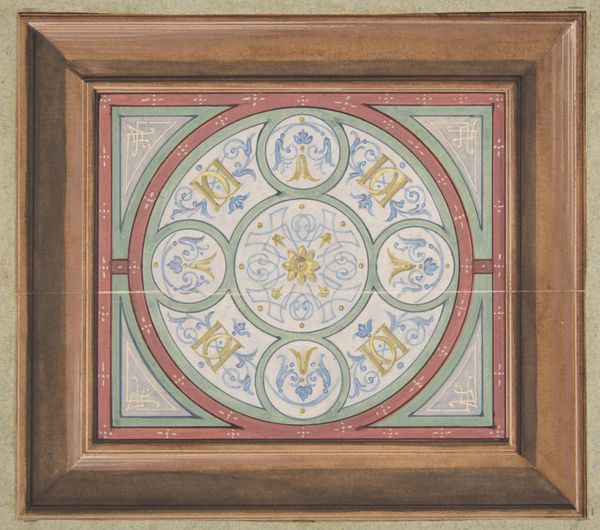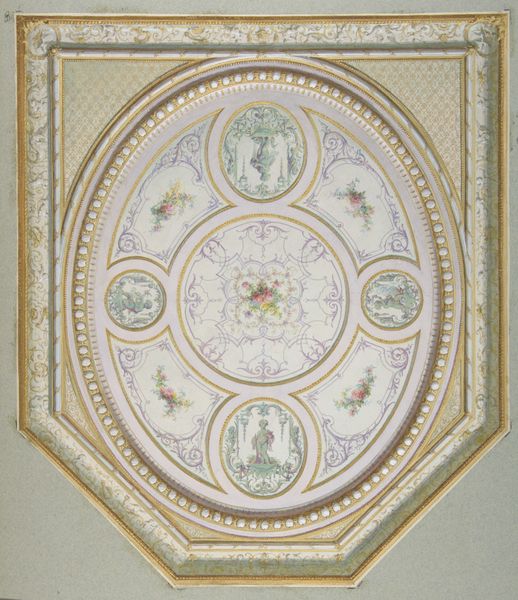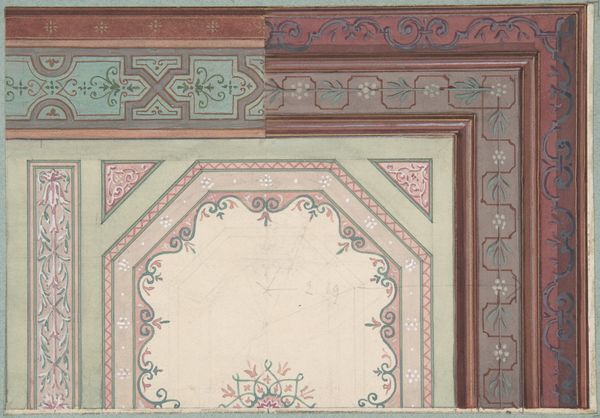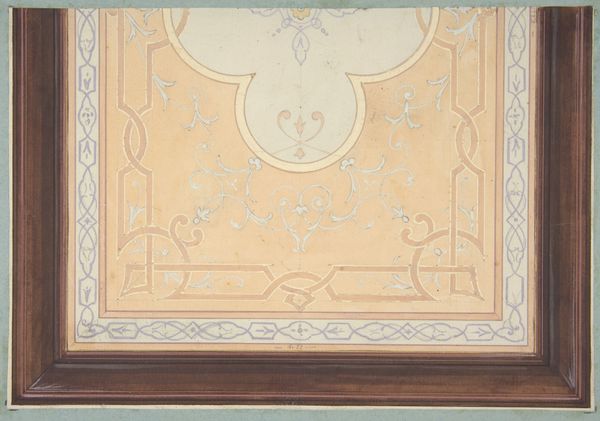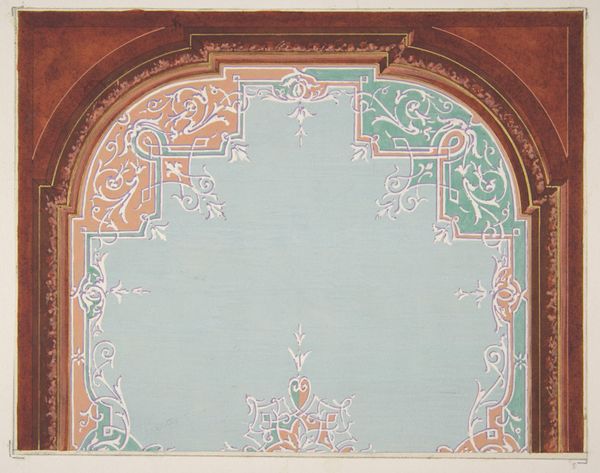
Design for the decoration of a ceiling 1830 - 1897
0:00
0:00
drawing, print, watercolor
#
drawing
# print
#
form
#
11_renaissance
#
watercolor
#
intimism
#
geometric
#
line
#
decorative-art
Dimensions: Overall: 7 3/4 x 10 5/8 in. (19.7 x 27 cm) image: 5 9/16 x 7 3/8 in. (14.1 x 18.7 cm)
Copyright: Public Domain
Editor: This is Jules-Edmond-Charles Lachaise's "Design for the Decoration of a Ceiling," made sometime between 1830 and 1897, using watercolor, drawing, and print. I'm really drawn to the delicate, almost ephemeral quality of the watercolor. How do you interpret this kind of design in its historical context? Curator: It's tempting to see this as purely decorative, but I think we need to consider the social and political function of such ornamentation. In the 19th century, elaborate interior design was often used to project wealth, power, and even social legitimacy, particularly for emerging elites. Who had access to such designs? What did these patterns signal about taste, class, and aspiration? Editor: So, it wasn't just about aesthetics, but also about social signaling? Curator: Precisely. Consider how geometric forms intersect with floral motifs. The controlled geometry could represent order and reason—values embraced by the bourgeoisie. But, then you have the floral patterns that introduce ideas of nature, beauty, and the feminine. These aren’t just surface-level choices; they reflect deeper cultural anxieties and power dynamics related to gender and class roles. Editor: That’s fascinating! I never thought about the design elements reflecting societal power structures so directly. Did Lachaise have specific patrons in mind? Curator: It’s likely Lachaise created designs for a specific clientele who had both the wealth and the social aspirations to commission them. Looking at the repeated motifs, can you speculate what class or political alliances the patron may have been signaling? What do you make of the symmetry itself? Editor: It definitely feels like a glimpse into the visual language of 19th-century ambition, using art as a tool to establish oneself. Thank you! Curator: Exactly. I’m so glad this helped bring forward these discussions today.
Comments
No comments
Be the first to comment and join the conversation on the ultimate creative platform.
